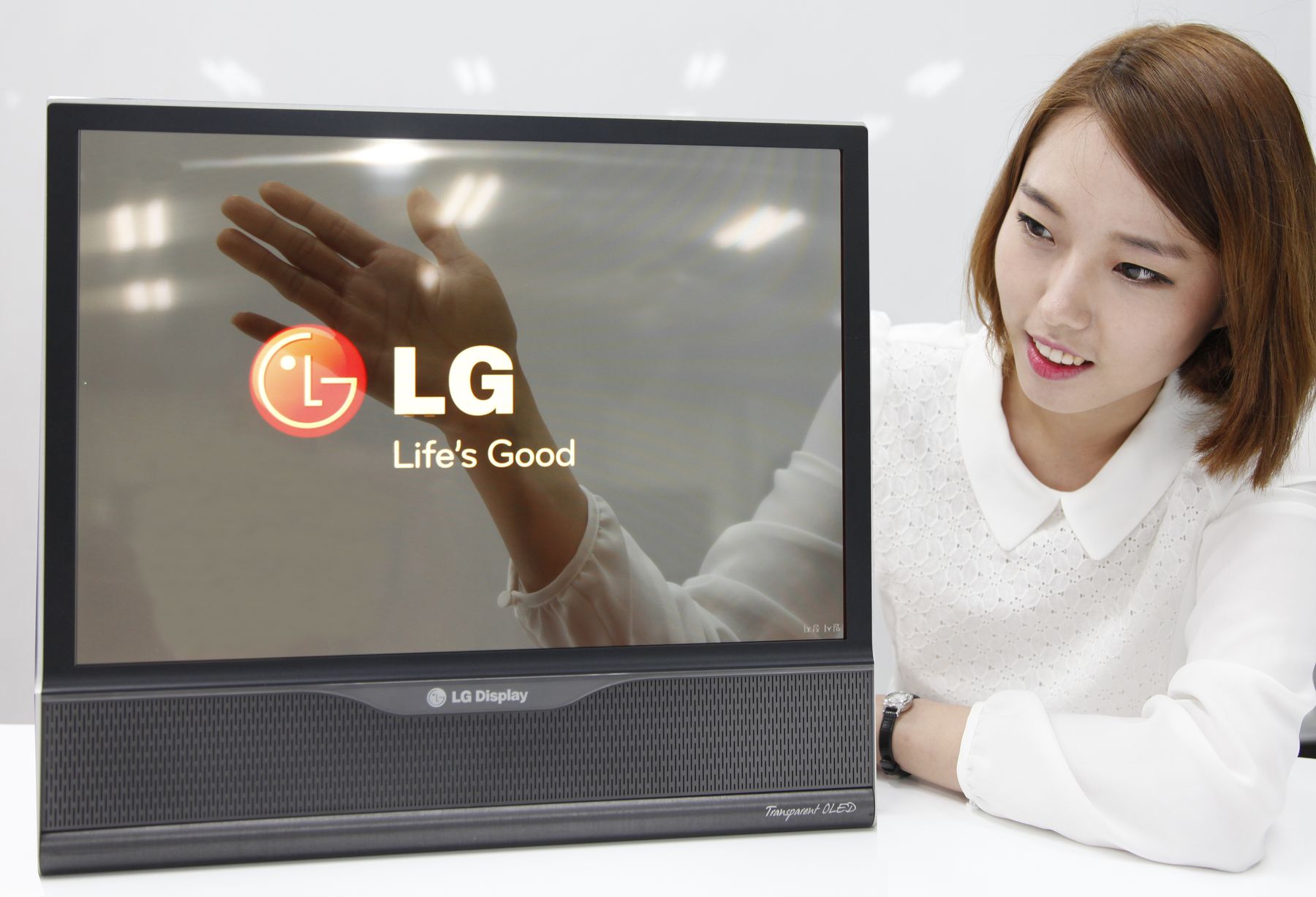LG Display Reveals an 18-inch Flexiblem OLED Panel

This week, LG Display announced that it has successfully created an 18-inch flexible OLED paper-thin panel that can be rolled up like a newspaper. The company also revealed a transparent screen that boasts a transmittance (clarity) level of 30 percent.
According to the company, the 18-inch flexible OLED panel has a 1200 x 810 resolution, nearly 1 million megapixels, and a curvature radius of 30R. As previously mentioned, the panel can also be rolled up to a radius of 3 cm without affecting what's displayed on the screen. The company reports that this new panel paves the way for "rollable" TVs of more than 50 inches in the future.
"LG Display used high molecular substance-based polyimide film as the backplane of the flexible panel instead of conventional plastic to achieve the maximum curvature radius," states the press release. "The polyimide film also helped reduce the thickness of the panel to significantly improve its flexibility."

LG Display also announced this week that its transparent OLED panel reached 30 percent transmittance thanks to the company's transparent pixel design technology. The company managed to lower the haze down to a level of 2 percent; existing transparent LCD panels are around 10 percent.
"We are confident that by 2017, we will successfully develop an Ultra HD flexible and transparent OLED panel of more than 60 inches, which will have transmittance of more than 40 percent and a curvature radius of 100R, thereby leading the future display market," said In-Byung Kang, Senior Vice President and Head of the R&D Center at LG Display.
This isn't the first time we've seen flexible displays, although this is likely the first of its kind to be larger than a smartphone. Sony revealed a 4.1-inch OLED display with a 432 x 240 resolution back in 2010. More recently, LG Display competes with Samsung in the bendable panel race. The company released its G Flex phone on November 13, 2013, while Samsung's Galaxy Round rolled into Korea in October 2013. They also compete against each other in the curved TV space.
"LG Display pioneered the OLED TV market and is now leading the next-generation applied OLED technology," In-Byung Kang adds.
Get Tom's Hardware's best news and in-depth reviews, straight to your inbox.
Follow Kevin Parrish @exfileme. Follow us @tomshardware, on Facebook and on Google+.
-
CaedenV lol, One million megapixels! That would be fantastic! Sadly this is a mere 1 megapixel, or 1 million pixels. Take your pick, but you can't pick both.Reply -
CaedenV As cool as this is (and it is pretty damn cool), I am really confused as to what you would practically use this for.Reply
Maybe a HUD on a car? But soon the robots will drive us everywhere, so that isn't needed. Outside of a few extremely small niche markets I just don't see why all of the pressure to develop these kinds of flexible transparent displays. -
nforce4max I am surprised that no one not one person has said this but flexible screens would be a big advance for mobile devices such as laptops, phones, and anything else normally ends up having a cracked screen.Reply -
wurkfur Replylol, One million megapixels! That would be fantastic! Sadly this is a mere 1 megapixel, or 1 million pixels. Take your pick, but you can't pick both.
I just thought he was talking about the next generation of smartphones. They need 1 million megapixels for their 5 inch displays. Meanwhile, Angry Birds is running at 2 frames per second.
-
Gam3r01 The only practical use that I can think of for this is curved displays (Stick with captain obvious here)Reply
Rather than having an Eyefinity/Surround setup with monitor bezels and multiple angles, wouldnt it be nice to have a single, ultra wide screen flexible monitor that can be flexed to fit your preferred viewing angle? -
Solandri ReplyAs cool as this is (and it is pretty damn cool), I am really confused as to what you would practically use this for.
This is the future of displays. The worst possible way to enclose a volume is with an object which is broad and flat. That maximizes the surface area for the enclosed volume, forcing you to waste material (additional space, weight, and cost) on casing. Phones, tablets, and laptops are all broad and flat - primarily because the screen forces them to adopt this shape.
With a rollable display, your phone or tablet can carried around in the form of a fat pen which houses the electronics and battery. Simply unroll the screen when you want to use it. A round shape minimizes the surface area for an enclosed volume, so is the most efficient use of materials and minimizes space, weight, and cost.
Have you ever transported a projector screen? Nobody carries it around fully extended - that'd be silly. They roll it up, then carry it around. Well, carrying it around fully extended is what people currently do with phones, tablets, laptops, monitors, and TVs. The same solution for projector screens is going to apply to your HDTV. The electronics will shrink to where it will all fit into a thin bar along one edge. You'll simply carry that around, hang it on the wall, and unroll the screen to watch TV.